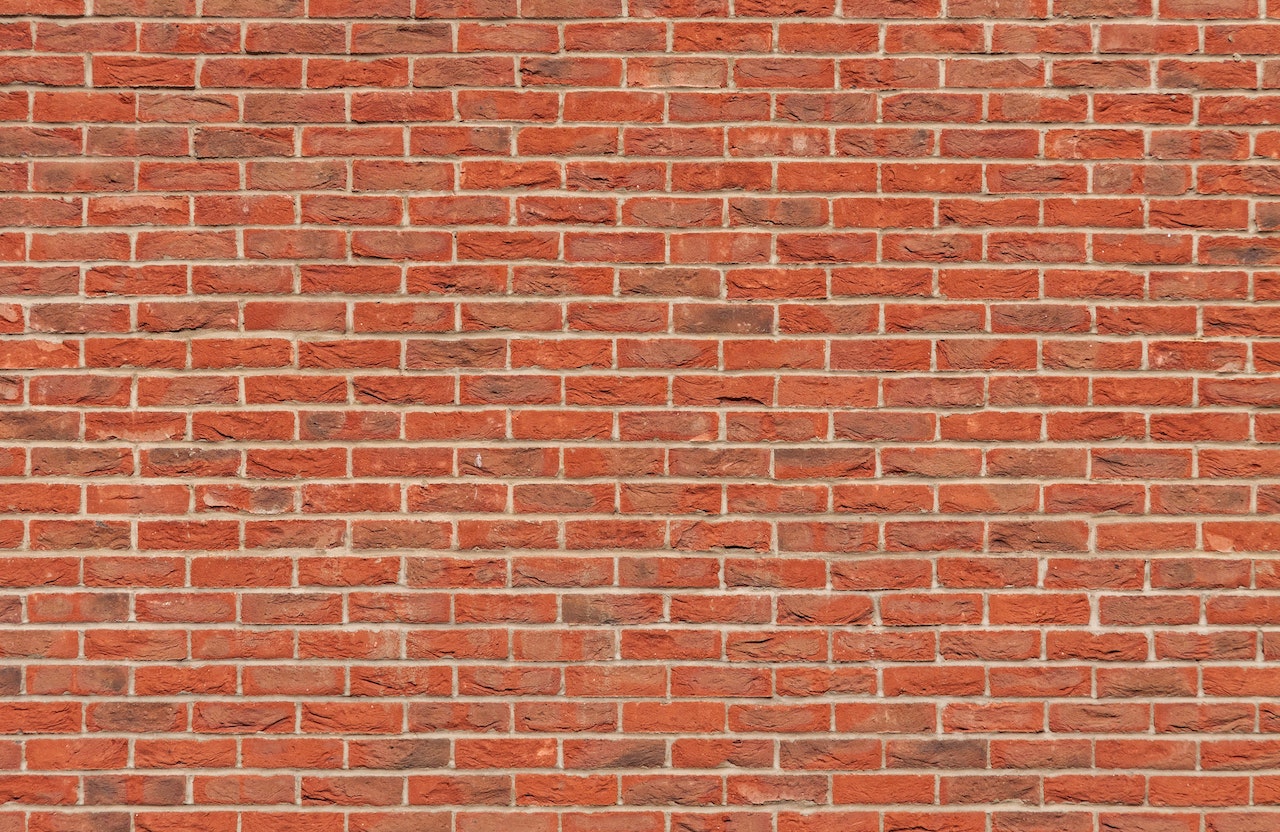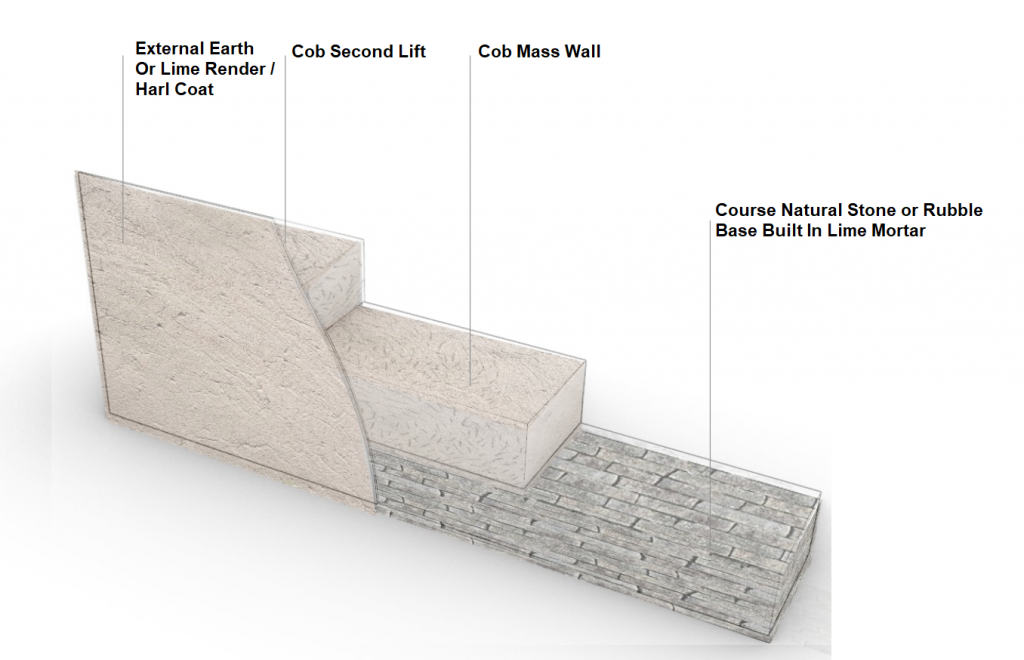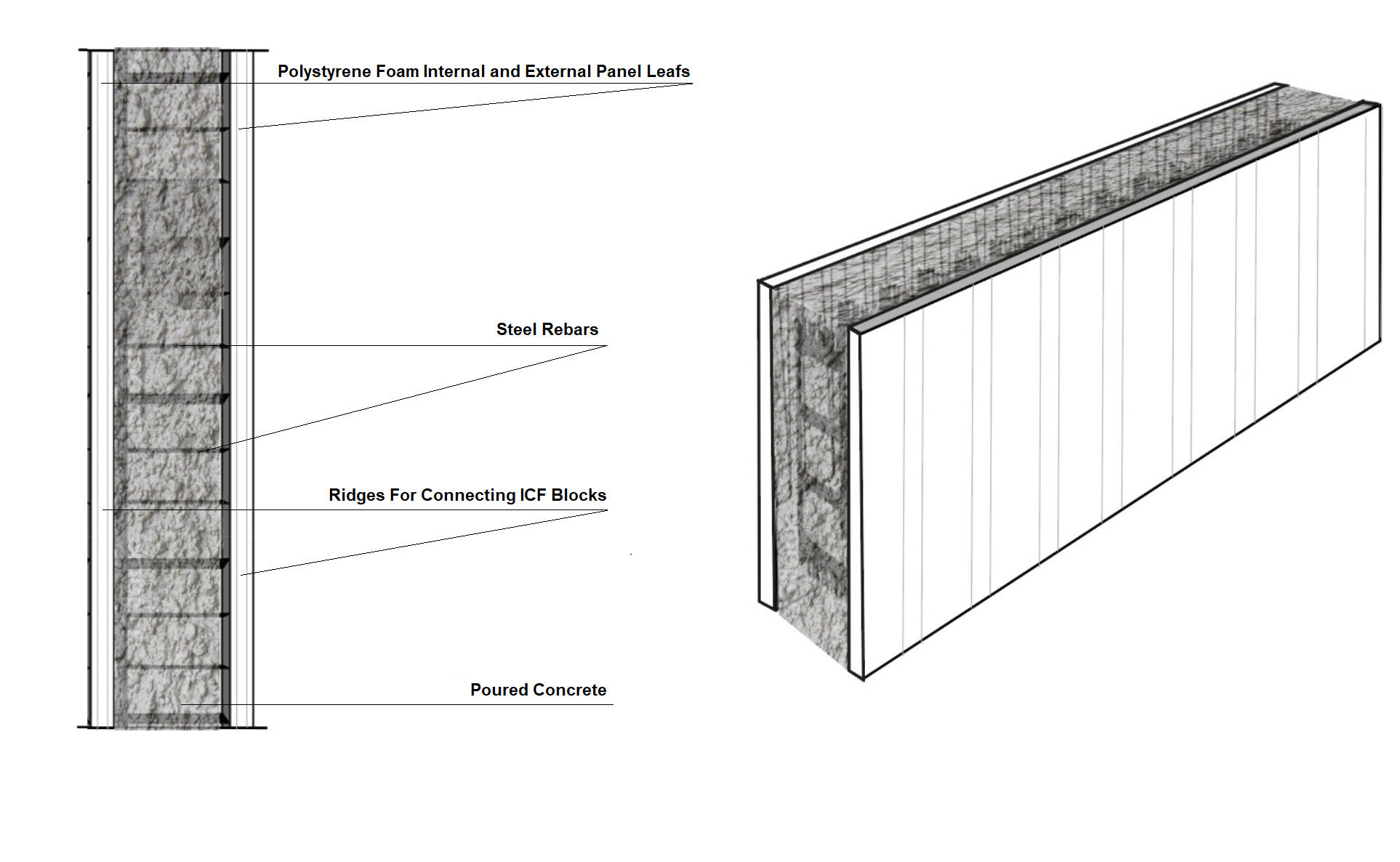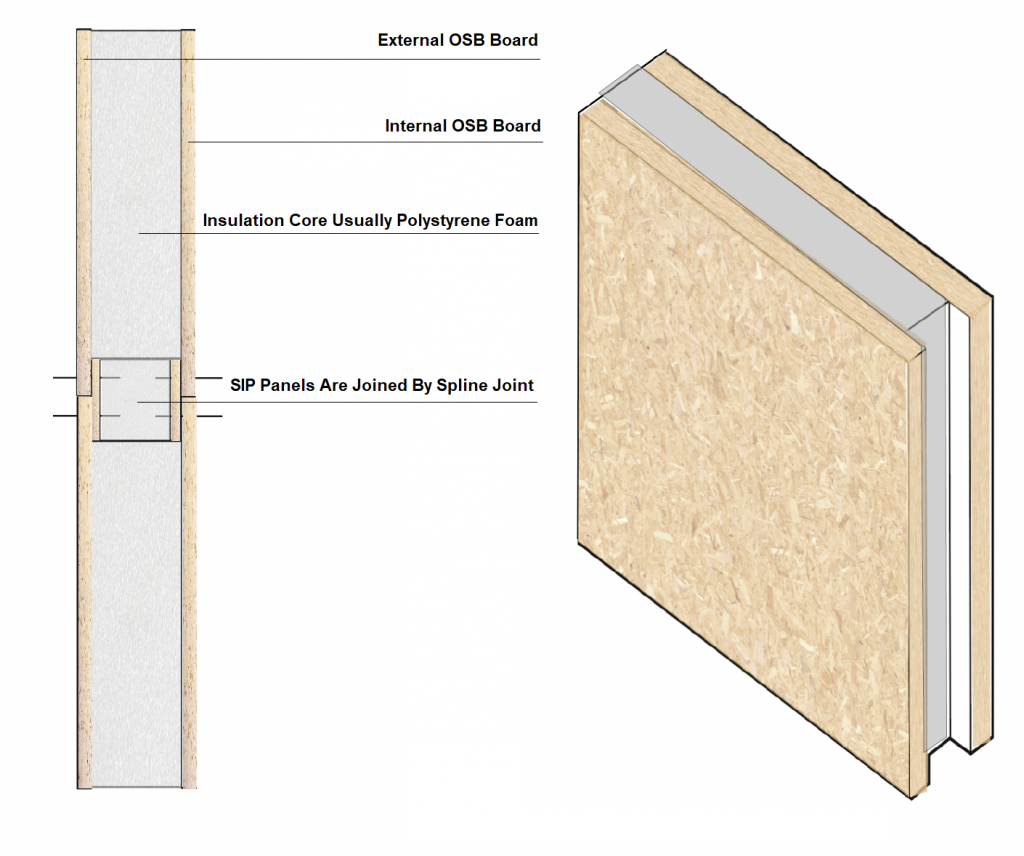Wall construction is generally a complete mystery to the majority of the public. The walls in the UK appear to be uniform in most places across the country and it can be easy to get mistaken and misidentify the wall construction. In this ultimate guide, we will show you how typical house walls are constructed in the United Kingdom.
Solid brick wall construction
Masonry is one of the UK’s most distinctive forms of construction. In England, houses built before the 1930s and older periods such as Victorian or Georgian will often have solid brick walls. A solid brick wall is usually 215 mm thick, which is the length of a normal brick. This kind of wall will usually have both the long face and the short face — or “header” — of the bricks showing in regular order. This makes it easy to tell apart from cavity walls, which only show the long face of the bricks.
Bricks have some benefits, like being easy to maintain, having good thermal properties, resistance to fire, and are appealing to the eye. But one of the biggest problems with a solid wall is that it doesn’t protect well against external weather elements. In fact, solid walls are prone to water penetration and dampness.
Another problem is that solid brick walls cause about half of all heat loss. If you insulate your solid walls, you might be able to lower your heating costs, make your home more comfortable, and save energy (insulation can be applied from the inside or the outside).
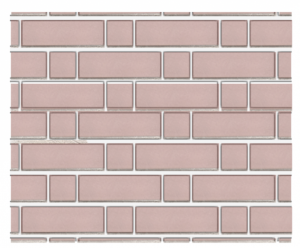
Typical solid brick wall external leaf pattern
Cavity wall construction
Since the 1930s cavity walls became popular in the UK because of the thermal efficiency they provide. However, only after 1983, the cavity wall with insulation became the norm and legal requirement. Older cavity walls built between the 1930s and 1983 may still have an open cavity with no insulation.

Cavity wall external leaf brick wall pattern
It is rather easy to identify the cavity wall as the bricks will normally be put lengthwise and in an ordered arrangement. This is due to the fact that this kind of wall is composed of two independent parts: an outer masonry skin that is one brick thick (102.5 mm) and an inside masonry skin that is separated from the outside by a small gap (50mm). The two leaves are linked together by wall ties to increase strength. As its name suggests, the cavity serves as a barrier against moisture intrusion and as a space for insulation.
Modern homes will likely use lightweight concrete blocks as the inner leaf since they are substantially more affordable and energy-efficient than bricks. In comparison to solid brick walls, water cannot easily pass through cavity walls and the air pocket acts as an additional layer of security for moisture to dry out. Additionally, insulating material for cavity walls may be injected or placed within the cavity, making it more energy efficient.
However, a disadvantage of well-insulated cavity walls can be a lack of ventilation which can cause condensation build-up and dampness.
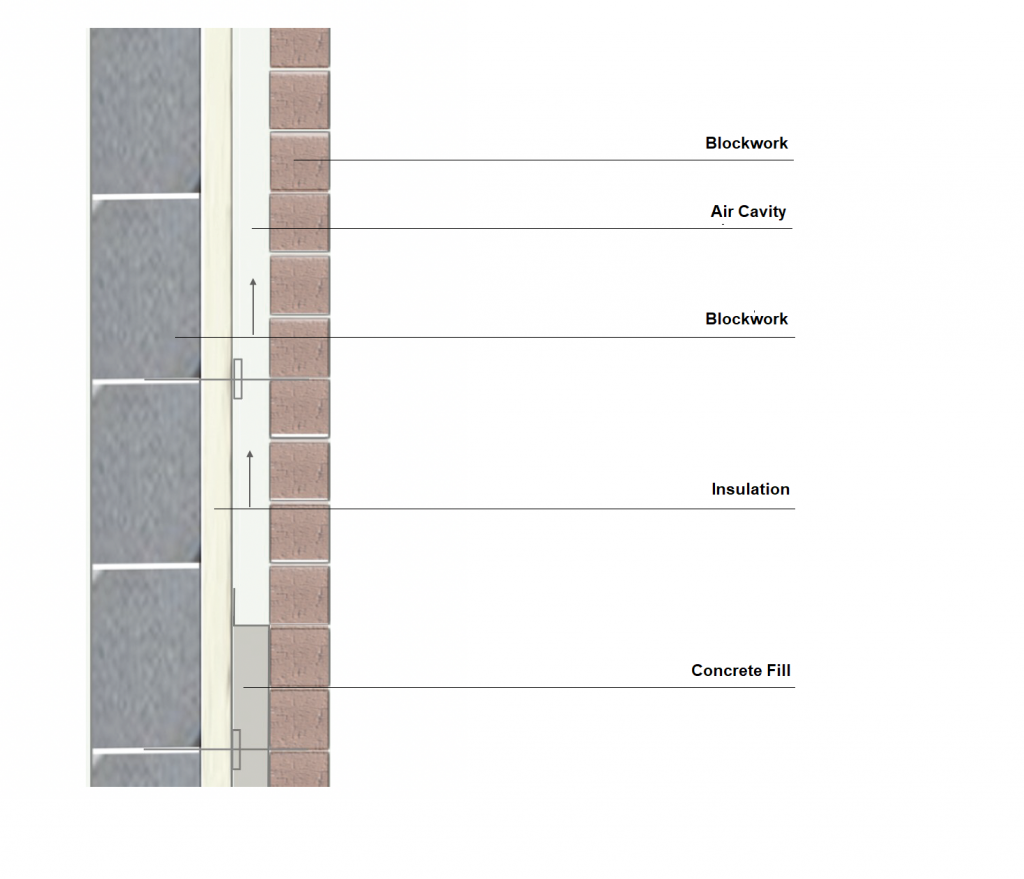
You can look at the layout of the bricks and the thickness of the wall to identify whether your home has solid brick walls or cavity walls.
A cavity wall is around 300 mm thick, whereas a solid brick wall is approximately 220 mm thick.
Cob wall construction
Cob is a particularly sustainable material made of clay, sand, straw, and water. The benefits of cob are that it is fireproof, resistant to seismic activity, and made with low-cost materials.
Due to these factors, cob has zero embodied energy and the materials it is made from make it entirely recyclable.
Modern cob buildings built in England, are considered to be extremely sustainable and allow interesting design solutions.
Cob walls are constructed by layering the material until it is completely dried before proceeding to the next course. The walls are continuously constructed in this way, gradually narrowing upwards. The wall is then plastered with clay or lime or can be left unfinished.
Because cob is a robust load-bearing material, two-story buildings are feasible. Cob has many additional essential properties. For instance, walls are often quite thick, in addition to providing excellent insulation against heat and cold, serving as vast heat storage.
As a result, there is a flywheel effect on a thermal circulation, which means that cold nights and warm days are balanced. The downside is that the building process can be time-consuming as it requires a lot of labour.
Concrete/prefabricated walls
As an alternative to more traditional building materials, concrete walls are a timeless and cost-efficient option. Modern construction techniques have allowed for the creation of several concrete wall types.
Concrete insulated wall panels are not only functional, but they are also suitable for quick instals and flexible building ideas. This kind of wall has a number of advantages, one of which is that it has excellent thermal efficiency. They may be up to 3.5 metres in height and have a thickness of up to 300 millimetres.
Insulated concrete formwork (ICF)
Fast-to-assemble insulated concrete formwork (ICFs) is a relatively recent development in the field of concrete construction.
As a permanent internal and exterior substrate for walls, floors, and roofs, rigid thermal insulation is often used in these constructions. Interlocking modular sections are dry-stacked and filled with concrete to create the structures. ICFs are of a high-thermal mass and are resistant to air and moisture.
Structural insulated panel system (SIP)
Structural insulated panels (SIP) gained favour over wood-frame wall systems owing to their greater insulation properties and structural robustness. These types of walls provide a cost-effective, environmentally friendly and labour-saving alternative to traditional timber framing.
Typical SIP panels are 100mm to 250 mm thick rigid foam panels sandwiched between two stiff sheathing materials. SIPs construct straight, structurally sound, airtight, and insulated walls in a single step.
Furthermore, since SIPs are manufactured in a factory, erecting house load-bearing walls using SIP panels is relatively quick compared with traditional masonry wall construction and reduces labour expenses and waste.
The long-term benefits of building using SIPs are lower energy bills and reduced energy consumption and CO2 emissions.
However, SIP wall systems have a number of disadvantages. SIP is less resistant to fire, mould, and decay than traditional masonry walls or ICF. Buildings built with SIP must have adequate ventilation systems which may increase the overall cost of the building. SIP buildings also provide less design versatility than ICF constructions which can readily handle complicated architectural curves and forms.
Timber frame construction
Timber frame construction is one of the oldest types of wall construction. The benefits of this type of construction include excellent thermal and sound insulation.
Buildings built using entirely timber will have walls, floors, and roofs engineered as a single, seamless unit.
Depending on the timber prices it can be a cost-effective and time-saving option to erect a building entirely from timber. However, timber-framed houses are prone to pest infestations, rot and offer poor fire protection.
Timber frames were used to construct many of historic towns and cities in England. The most common thickness for timbers used in a timber-frame partition wall is 100mm x 50mm.
Steel frame construction
Steel framing is a method of building construction that employs a ‘skeleton frame’ of horizontal beams and vertical steel columns arranged to support the walls, floors, and roof of the structure. Exterior panels are attached to the steel frame and then rendered or clad.
Steel frames are often used for modern construction houses or commercial buildings because they last a long time, save time, and don’t need much or any maintenance.
In conclusion
Hopefully, this article has helped you understand the different types of wall construction found in houses and buildings across the United Kingdom.
If you have a building with defects, in particular, pertaining to internal and external walls and require specialist input we offer you can obtain an RICS survey.

